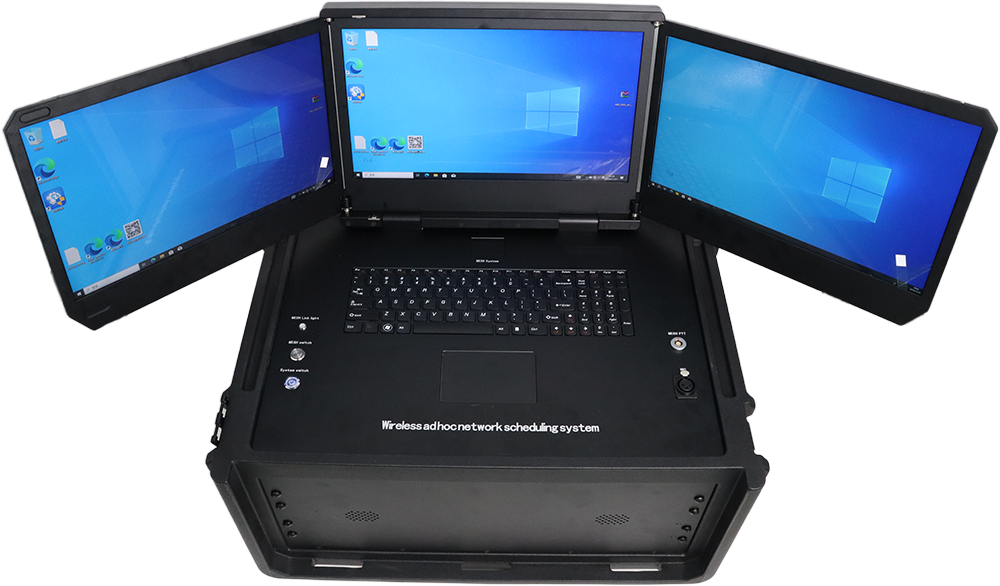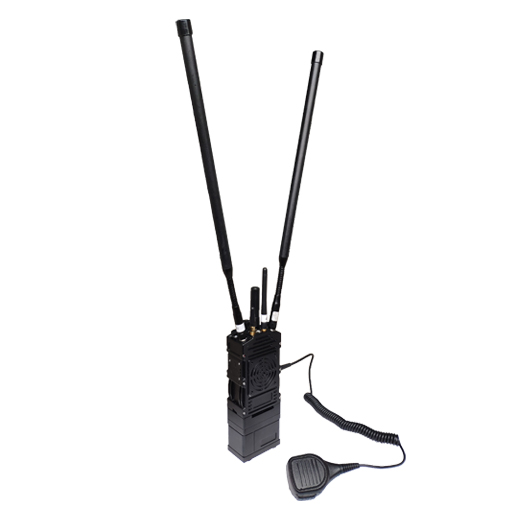What is an Emergency Communication System and How Does It Work?
In modern society, reliable communication is critical, especially during emergencies such as natural disasters, industrial accidents, or security incidents. An emergency communication system (ECS) is designed to provide rapid, reliable, and secure communication channels for first responders, government agencies, businesses, and communities when conventional communication networks fail or become overloaded. These systems ensure that vital information can be transmitted quickly, facilitating coordinated responses, saving lives, and mitigating property damage.
Emergency communication systems are not just limited to disaster scenarios—they also support public safety, critical infrastructure monitoring, and crisis management, making them indispensable tools for governments, corporations, and emergency services worldwide.

(Portable self-networking three-screen command and dispatch platform TQ-7702MT)
What is an Emergency Communication System?
An emergency communication system is a network of technologies, devices, protocols, and procedures designed to enable effective communication during crises. Unlike regular communication systems, ECS is purpose-built to function under adverse conditions, including power outages, network congestion, natural disasters, and other disruptions.
The main goals of an ECS are:
Reliable communication under all circumstances – ensuring messages are delivered even when traditional networks fail.
Rapid information dissemination – enabling first responders, emergency personnel, and the public to receive updates in real time.
Coordination among multiple agencies – integrating police, fire departments, hospitals, utilities, and government bodies to work seamlessly.
Safety and security – ensuring sensitive information is encrypted and communication channels are protected from interception or tampering.
Components of an emergency communication system may include:
Radio networks (VHF, UHF, or digital radios)
Satellite communications for remote or infrastructure-compromised areas
Mobile command centers equipped with communication hardware
Internet-based alert systems (SMS, email, mobile apps, or social media integration)
Sensors and IoT devices for automated alerts (e.g., fire, flood, or gas detection)
How Does an Emergency Communication System Work?
The operation of an ECS can be broken down into several key stages:
1. Detection and Monitoring
Modern ECS often integrate with monitoring systems that detect emergencies automatically. For instance, sensors may detect smoke, rising water levels, gas leaks, or seismic activity. Once an anomaly is detected, the ECS is triggered, initiating alerts and notifications to relevant personnel.
2. Alerting and Notification
Once an emergency is detected, the ECS broadcasts alerts using multiple channels:
Mass notification systems deliver messages via SMS, emails, and mobile apps.
Public address systems and sirens communicate immediate threats to people in affected areas.
Radio and satellite links ensure communication with first responders even when traditional networks are down.
Multi-channel alerts ensure redundancy and maximize the chance that critical messages reach their intended recipients.
3. Coordination of Response Teams
An essential function of an ECS is coordinating multiple agencies. This may include fire departments, police, medical services, and utility providers. Using secure communication channels, teams can share real-time data such as:
Location of affected individuals
Status of infrastructure (e.g., roads, power lines, water systems)
Deployment of rescue units and equipment
Updated situational reports
This centralized coordination reduces delays, prevents redundant efforts, and enhances the efficiency of rescue operations.
4. Communication Under Adverse Conditions
Emergency communication systems are designed to work when conventional networks fail. This may involve:
Ad hoc wireless networks that allow devices to connect directly without relying on cellular towers.
Mesh networks for decentralized routing, ensuring that messages can hop between devices until they reach their destination.
Satellite phones and links to maintain communication in areas where terrestrial infrastructure is destroyed.
These technologies ensure resilience and continuity, which are critical when every second counts.
5. Data Management and Decision Support
ECS often integrates with software platforms that manage real-time data and analytics. This allows emergency managers to:
Visualize affected areas on digital maps
Track personnel and resources
Analyze trends and predict potential hazards
Make informed, data-driven decisions quickly
By combining communication with data intelligence, ECS enhances situational awareness and decision-making capabilities during crises.
6. Public Communication and Feedback
During emergencies, clear communication with the public is crucial. ECS allows authorities to:
Issue evacuation orders, safety instructions, and shelter locations
Provide updates on ongoing situations
Collect feedback from affected communities through mobile apps or social media
Engaging the public effectively reduces panic, ensures compliance with safety measures, and saves lives.
Applications of Emergency Communication Systems
Emergency communication systems are applied across a wide range of scenarios, including:
Natural Disasters: Earthquakes, floods, hurricanes, wildfires, and tsunamis.
Industrial Accidents: Chemical spills, explosions, power outages, and transport incidents.
Public Safety: Terrorist attacks, civil disturbances, and large-scale events.
Healthcare: Coordinating emergency medical services during pandemics or mass casualty incidents.
Utilities and Critical Infrastructure: Ensuring continued operation of power, water, and transportation networks.
In each of these scenarios, ECS ensures that responders receive accurate, timely, and actionable information to mitigate risks and protect lives.
Advantages of a Modern Emergency Communication System
Reliability – Continuous operation during crises.
Speed – Rapid alerts and response coordination.
Redundancy – Multiple communication channels to avoid single points of failure.
Integration – Connects multiple agencies, systems, and sensors.
Scalability – Can support small communities or large metropolitan areas.
Challenges and Considerations
While ECS is vital, deploying and maintaining an effective system requires careful planning:
Infrastructure cost – High-performance systems may require significant investment.
Training – Personnel must be trained to use equipment under stress.
Maintenance – Equipment and software must be regularly tested to ensure reliability.
Cybersecurity – Systems must be protected from hacking or interference.
Conclusion
An emergency communication system is an essential tool for saving lives, protecting property, and maintaining public safety during crises. By combining real-time monitoring, multi-channel alerting, robust coordination, and resilient technologies, ECS ensures that communication continues when conventional systems fail.
TuQian Emergency Communication System
TuQian provides advanced emergency communication systems designed for real-world challenges. Our solutions integrate ad hoc wireless networks, mesh communication, satellite links, and mobile command centers to deliver reliable, secure, and scalable communication during any crisis. From disaster response to public safety management and critical infrastructure monitoring, TuQian ensures that agencies, communities, and organizations remain connected when it matters most.
Emergency communication ad hoc network equipment
Emergency MESH communication equipment
Emergency networking radio station
Military ad hoc network radio station
-
 2025-10-24
2025-10-24 -

What Is Point to Point and Point to Multipoint Wireless Network?
2025-09-05 -

What Are the Two Types of Microwave Transmission?
2025-08-29 -

Multi-Node MESH Networking: Principles and Real-World Applications
2025-08-18 -

What Is the Difference Between Radio and Microwave Video Transmission?
2025-07-30 -

Unmanned Aerial Vehicle Transmission Equipment Communication Solution
2025-07-24








